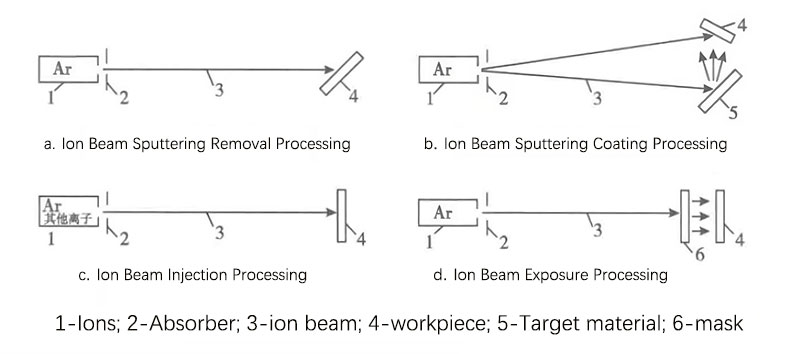Ion Beam Processing Technology: Principles, Techniques, and Applications
Principles, Characteristics, Processes, and Applications of Ion Beam Processing in Microfabrication.
Introduction to Ion Beam Processing
Ion beam processing is a sophisticated technique employed in precision manufacturing and microfabrication, involving the use of accelerated ions to modify the surface of a workpiece. The process involves generating an electron beam in a vacuum which ionizes an inert gas within an ionization chamber. The positively charged ions produced are then accelerated, focused, and directed toward the workpiece, enabling precise material processing through micro-mechanical impacts.
Our factory business: We design, develop and produce powder metallurgy moulds, carbide parts, powder injection moulds, stamping toolings and precision mould parts. Whatsapp:+8618638951317. Email: [email protected],
Principles of Ion Beam Processing
Utilizing principles similar to electron beam processing, ion beam technology employs ions that are significantly heavier than electrons, providing greater impact energy due to their higher mass. For instance, argon ions are about 72,000 times heavier than electrons, allowing for a more substantial energy transfer upon impact. Unlike processes that rely on thermal energy, ion beam processing uses the kinetic energy of ions for micro-mechanical material removal or alteration, minimizing thermal damage.
Characteristics of Ion Beam Processing
- High Precision and Surface Quality:
Ion beam processing achieves exceptional levels of accuracy and surface integrity, as it does not produce heat or mechanical stress. The ion beam spot size can be finely controlled to about 1 µm, reaching processing accuracies at the nanometer scale. - Versatility in Material Handling:
This technology is particularly beneficial for materials that are sensitive to oxidation, such as certain metals and high-purity semiconductors, since the process occurs in a vacuum. - Diverse Processing Capabilities:
Ion beam technology is not limited to material removal but also extends to coating and implantation, making it integral in fields like integrated circuit fabrication. - Wide Application Range:
The flexibility in adjusting the ion beam spot size and energy density allows for various processing tasks, from precise material removal to coating and etching. - Equipment and Cost Considerations:
Despite its advantages, ion beam processing requires specialized, costly equipment and vacuum systems, limiting its accessibility.
Ion Beam Processing Techniques and Applications

- Ion Beam Sputtering Removal Processing:
Used for ultra-precision machining of materials by removing atoms or molecules from the workpiece surface. Applications include etching integrated circuits, creating non-reflective surfaces on solar cells, and machining grooves in precision bearings. - Ion Beam Sputtering Coating Processing:
This technique involves bombarding a target material with ions to displace atoms or molecules that then deposit on a workpiece, forming a dense, adherent coating. This method is used for applying wear-resistant films on tools and decorative coatings on various substrates. - Ion Beam Injection Surface Modification Processing:
High-energy ions are used to alter the surface properties of materials by embedding ions into the substrate, thereby changing its structural and chemical characteristics. This is crucial in semiconductor manufacturing and enhancing the properties of metal surfaces. - Ion Beam Exposure Processing:
Offers high-resolution capabilities for microstructuring applications, such as in photomask fabrication and direct writing techniques in microelectronics. Ion beam exposure is known for its high sensitivity and minimal substrate damage compared to electron beam alternatives.
Conclusion
Ion beam processing stands out in the field of material science and engineering for its precision, versatility, and ability to handle delicate and complex tasks. While the technology involves significant investment in specialized equipment, its benefits in terms of processing capabilities and outcomes justify its use in high-tech industries such as semiconductor manufacturing, aerospace, and precision engineering. As advancements in ion beam technology continue, its applications are expected to expand, further enhancing its role in modern manufacturing processes.

